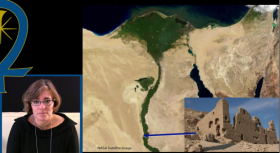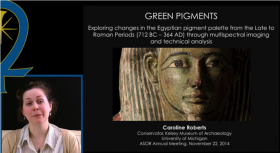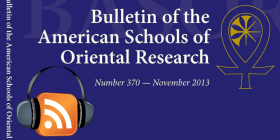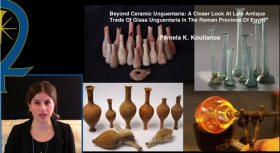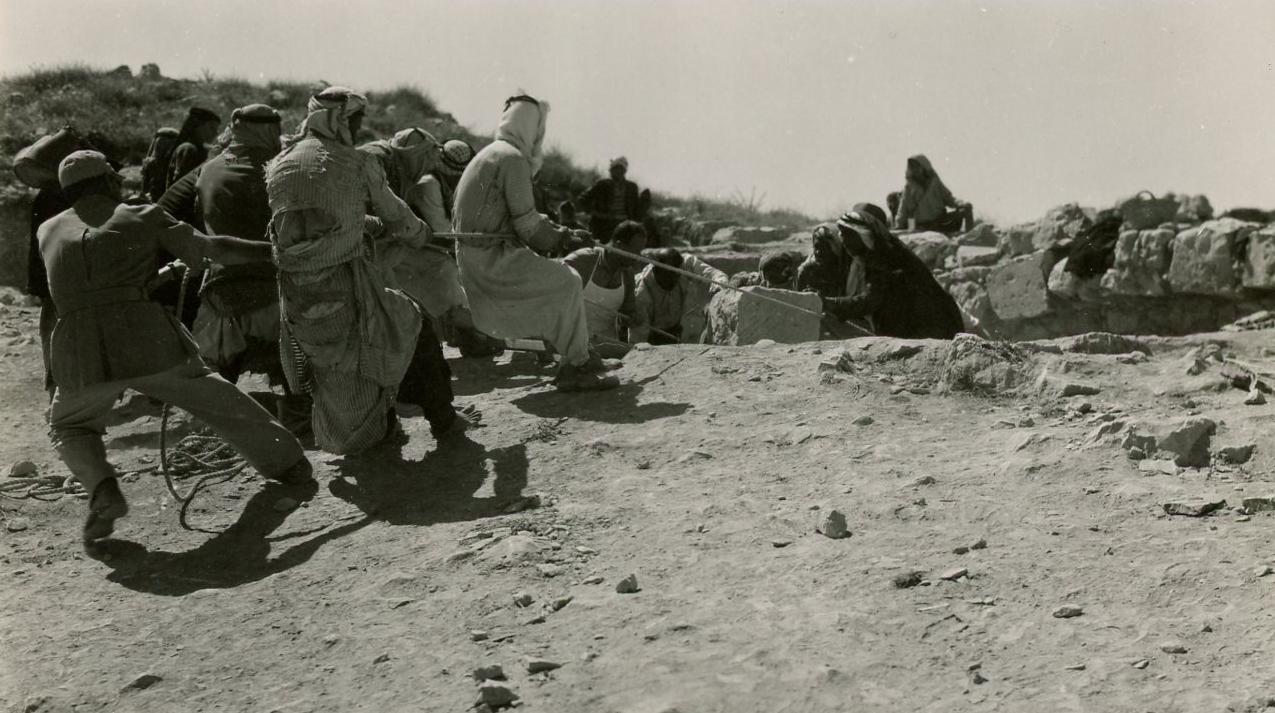Rediscovery with Reflectance Transformation Imaging - Annual Meeting Poster [VIDEO]
This paper presents the contents of the block as revealed through Reflectance Transformation Imaging (RTI) and digital epigraphy. The author applied these technologies as part of […]
From the Nile to the Desert and Back
At theASOR Annual Meeting, Darlene Brookes Hedstrom, of Wittenberg University, met with ASORtv to present her paper, “From the Nile to the Desert and Back: Writing a New History of Egyptian Monastic Site Formation.” She first presented her […]
Green Pigments: Exploring Changes in the Egyptian Pigment Palette [VIDEO]
From the Late to Roman Periods (712 BCE–364 CE) through Multispectral Imaging and Technical Analysis. Caroline Roberts was nice enough to volunteer to present her paper for ASORtv. This paper looks at […]
Life and Happiness: A Petitionary Reading of the Horizontal Wadi el-Hôl Inscription
At theASOR Annual Meeting, Aren Wilson-Wright presented his paper, “Life and Happiness: A Petitionary Reading of the Horizontal Wadi el-Hôl Inscription.” He also took the […]
FOA Podcast, “A Look Inside BASOR,” Featuring Professors Rollston and Cline
In this episode of the Friends of ASOR podcast, we go behind the scenes for an inside look at the Bulletin of the American Schools of Oriental Research (BASOR). We’re talking with […]
Beyond Ceramic Unguentaria
At theASOR Annual Meeting, Pamela Koulianos (North Carolina State University) presented her paper, “Beyond Ceramic Unguentaria: A Closer Look at Late Antique Trade of Glass Unguentaria […]
When were the Israelites? Understanding Israelite Identity in the Pre-Exilic Period
Scholars have long asked, “Who were the Israelites?” Less frequent is the question, “When were the Israelites?”
Peer Review of 1177 B.C.: The Year Civilization Collapsed
By: Rachel Hallote When archaeology makes the news, it is most often due to sensationalist claims made by journalists or others who misrepresent archaeological finds and their significance. It is therefore particularly gratifying when an archaeologist gets to start the conversation himself or herself, and for the profession to represent itself publicly. This is what […]
Gender, Identity and Memory in The Mortuary Practices of Elite Women in Eighth-Sixth Century BCE Egypt
By Dr. Jean Li, Ryerson University Whenever I teach Ancient Egypt I begin by asking my students, “What comes to mind when you think about Ancient Egypt?” The replies, as one can imagine, invariably include “pyramids”, and “King Tut”. These are indeed our images of ancient Egypt: kings and great monuments to kings. Strikingly absent […]
Egyptian Ministry Signs First Ever Public-Private Partnership Agreement with International Coalition to Protect Egyptian Antiquities
By: Peter Herdrich, Vice Chairman of the ICPEA Washington, DC - The Egyptian Minister of State for Antiquities has signed a public-private partnership agreement with the U.S.-based International Coalition to Protect Egyptian Antiquities (ICPEA) to protect Egyptian cultural heritage sites and antiquities from looting and cultural racketeers. At a signing ceremony on Monday, March 10 in […]
Hussein’s Head and Importance of Cultural Heritage
By: Michael Press, Research Fellow at the Center of Advanced Spatial Technologies University of Arkansas In recent years archaeologists have sounded a nearly continual warning about threats to cultural heritage, from artifacts to buildings to sites, in the Middle East. This began with Iraq and now, after the events of the Arab Spring, continues especially […]
ASOR Archives: The Dibon Excavation Collection
Did you know that the ASOR Archives documents over a century of American archaeological research in the Near East? The archive holds about forty collections, including the papers of past ASOR presidents, photograph collections, personal papers, and excavation collections. One of these is the Dibon Excavation Collection, which contains documents and photographs from ASOR’s dig […]
Surviving Collapse: Khirbat Iskandar, Jordan in the EB IV Period
By: Suzanne Richard, Professor Department of History and Archaeology; Department of Theology Director, The Collins Institute for Archaeological Research and the Archaeology Museum Gallery at Gannon Calamity, upheaval, and dislocation, whether wrought by human disasters such as war or natural agents such as earthquake and climate change, eventually face all societies. But in an era of […]
How ASOR is Helping to Protect Egyptian Antiquities
By: Peter Herdrich EFFORTS TO SAVE EGYPTIAN ANTIQUITIES ARE PICKING UP SPEED. BUT WHOSE RESPONSIBILITY IS IT? The Washington Post recently published an opinion piece by Mohammed Ibrahim, Egypt’s minister of antiquities, under the headline, “Egypt’s stolen heritage.” In it, Mr. Ibrahim connects Egypt’s archaeological heritage to two centuries of tourism, stating that tourism is […]
An Investigation into the Figurative Expressions of Ancient Egyptian in Different Text Genres
By: Shih-Wei Hsu, Free University, Berlin Noble Group Fellow W.F. Albright Institute of Archaeological Research During my award period, I continued to work on my dissertation thesis, which deals with figurative expressions in Ancient Egyptian texts, especially royal inscriptions. The dissertation consists of three parts: the first part is an introduction to the study […]
Egyptian and Egyptianized Material in Late Bronze Age Canaan: An Examination of Cultural Identity
By: Krystal V.L. Pierce, University of California, Los Angeles Educational and Cultural Affairs Fellow W.F. Albright Institute of Archaeological Research The research I was able to conduct while in residence at the Albright resulted in the completion of my Ph.D. dissertation at UCLA entitled, Living and Dying Abroad: Aspects of Egyptian Cultural Identity in […]
200 Years of Tourism in the Holy Lands – From Mark Twain to the Digital Age
By: Uzi Baram, Professor of Anthropology at the New College of Florida Heritage Tourism’s Roots in the Grand Tour Heritage contends with nature as the fastest growing parts of the world’s largest industry, tourism. Heritage tourism involves visits, usually leisurely and purposefully enjoyable, to a historically or culturally significant locale. Archaeological sites are particularly attractive for […]
